Rethinking Autism in 2023. The future starts now.
World Autism Awareness Day is an internationally recognised day marked on 2 April every year by the United Nations, encouraging people across the globe to take measures to raise awareness about people with autism. For many the entire month of April is dedicated to Autism Awareness, and you may see people on social media wearing blue with the hashtag #LightItUpBlue throughout the month.
However, as of 2021, the Autism Society in America has chosen to shift its message from one of ‘awareness’ to one of ‘Autism Acceptance’, and many autism rights activists now believe that Autism Awareness initiatives feed into perceived “ableism” actually working against autistic people.
SchoolsCompared Senior Editor, Tabitha Barda, spoke with Mark Ellis, Head of Inclusion at GEMS FirstPoint School – The Villa, a school jointly awarded the 2021-2022 Top Schools Award for Best Mainstream School for Children of Determination in the UAE, to find out how we can look at Autism through a different lens – and so make a better world for every one of us.
Rethinking our Approach to Autism. Why Autism Awareness Day does more harm than good.
One of the things I love about the world of inclusion is the vibrant nature of debate, and at this time of year, when we have a plethora of awareness days linked to disability, I find myself in discussion with my colleagues and other inclusion professionals about the impact that such awareness days really have.
Over the years, I have concluded that Autism Awareness Week – just like World Down Syndrome Day and other well-meaning initiatives – is not actually furthering the cause of true inclusion and integration. In many ways, I fear that such initiatives may actually do more harm than good.
Let me be clear; this is not solely about autism. There seem to be awareness days or awareness months around every corner – so many that it’s hard to keep up. That said, for me, the issue is the same for all. It’s like choosing the colour of the curtains for a house whose foundations have not yet been laid, because our approach to raising awareness is fundamentally flawed. It needs to be truly ‘embedded’ in the psyche of each of us that it becomes part of us, so deeply entwined in our DNA that it needs no further promotion.
That, of course, is the long-term objective, the long-term view; long-held prejudices and preconceptions do not change overnight. We have a collective responsibility to address this together. And it’s certainly not the sole responsibility of schools. It should be addressed in the workplace, in government and around the kitchen table.
By compartmentalising the issue to one specific month or day, we are reinforcing the idea that this is something we need not be concerned about for the rest of the time. We’ve bought the ribbon, we’ve worn the t-shirt, we can give ourselves a reassuring metaphorical pat on the back and feel like we have ‘done our bit’. Then we move on to the next thing and, year on year, it is this idea that is promoted and embedded, while the mission of true inclusion is pushed back a little.
I often find myself talking to parents of students newly diagnosed with a whole range of learning disabilities. At this point the family can be subjected to a whole range of conflicting emotions: confusion, uncertainty, vulnerability and even despair. I feel a duty to explain to them that our school needs their child far more than they need us. This is because true inclusion is not about that child with additional needs; it’s about the positive impact that the child will have on everyone they meet across the entire school community. This is why the existence of selective schools is a huge barrier to the promotion of true inclusion.
Labels like ‘determined ones’ don’t help
In our drive to create inclusive learning environments for children of all abilities, words really do matter. In my opinion, labels like “determined ones” really don’t help. A disabled person is a person first, and disabled (a very distant) second. From an educational perspective, I’m also not keen on the phrase “Special Educational Needs”; I believe it should be “Different Educational Needs”.
Both of my parents were disabled, and I have been working with disadvantaged families for over 30 years. The common theme I have picked up on in my career and personal life is that disabled people, including those with physical, sensory and learning disabilities, are not looking for any kind of special treatment or advantage. Quite the contrary; what they crave is acceptance and equal access. That’s all.
How we can help those with autism?
There’s a theory that every single one of us is autistic. It is, after all, a spectrum and the theory contends that on any given day and under a variety of environmental circumstances, our position on that spectrum can radically alter. So, perhaps, why not take this to its logical conclusion and simply treat everyone as if they were autistic? Because they probably are!
So, regardless of the week or month, or if you wear blue in April or not, be patient, be kind and try to remember to do some of the following things – every single day, not just during Autism Awareness Month.
Be aware of sensory inputs
Be aware of the sensory inputs around you, especially if they have changed or are changing.
What does this mean? Up until a few years ago, like most people, I thought of sensory inputs relating to vision, hearing, touch, taste and smell. However, having the good fortune to encounter some extraordinary professionals in disciplines such as occupational therapy and physiotherapy, I learnt about the many additional senses we humans have. Vestibular sense and proprioception, for example, are senses most of us don’t even think about and yet which other people have to work hard on and can be adversely affected by. Likewise, thermoception, the awareness of the temperature around us; nociception, the ability to feel pain; and chronoception, a sense of the passing of time.
For many autistic people, a deficit in one of these areas or more likely in multiple areas of sensory input represents an ever-present barrier to interaction with the non-autistic world. Collectively, we have a responsibility to do all we can to reduce the impact of this barrier, and the best way we can do this is by developing an ever-present awareness that the barrier even exists. We have to work hard on this, because it’s not always easy to spot.
For instance, a student has a tantrum, closes down and becomes unreachable even to those closest to them. This may be the student’s only way to communicate their overwhelming discomfort in reaction to some new combination of sensory inputs. Often, it’s obvious; orange juice in a lunch box when pineapple was expected. Other times, it’s almost impossible to identify – like the student in a classroom where the AC filters have been replaced, meaning a previously constant and barely audible hum has suddenly disappeared from that child’s auditory field.
Expecting everyone to identify and correct the impact of ever-changing sensory inputs is not realistic. However, expecting everyone to be patient, kind, empathetic and supportive should be the absolute minimum.
Be hyper-aware of the language you use
This means being consistent with your use of vocabulary and not overcomplicating your message.
It would be great if there were a ‘one size fits all’ method or technique that was guaranteed to work every time with every student, no matter what their learning needs. (By the way, please note that every single human being on our lovely planet has unique learning needs.) If there were such a method or technique, then people like me would be out of a job and schools would be significantly less interesting places!
Our primary channel of choice when it comes to communication can become one of the most imposing barriers for many students. The bewildering complexity of spoken language can be multiplied by a factor of several hundred when combined with the subtleties of non-verbal cues, variations of tone and pitch, and even the speed of delivery. The English language is celebrated the world over for its depth of variety and continually expanding vocabulary. But what academics find wondrous, many people (not only those who are autistic) can find overwhelming.
Here’s a very simple example: All over the world at around 10.30am students and teachers stop what they are doing for 20 minutes or so. Is this recess, snack time, break, play time or something else? All of us could produce a list of similar examples where we casually and unthinkingly mix and match between various words or phrases. For some, this can be confusing at best and overwhelming at worst.
‘Speech, Language and Communication Needs’ is the number one category of what we refer to as Special Educational Needs and Disabilities (SEND) in the UK. One of the simplest and most impactful methods to support SEND students is to simply ask them which words they prefer to use. In this way, a sort of ‘script’ can be developed and used with consistency by everyone involved with that student. Is that difficult? Is that beyond us?
Work on your own receptive language skills
Work on your own receptive language skills, especially your reading of non-verbal communication, and be aware that some people (people with autism?) can really struggle to read your non-verbal cues and complex social interactions in general.
On a very simple level, receptive language is the process of hearing a spoken instruction, processing it and, where necessary, taking required action. But, of course, there’s much more to it than that. We all have receptive language skills, although some of us may need the help of a Speech and Language Therapist to develop them. We take these skills for granted and naively believe that we don’t need to ‘work on them’. However, a shift in mind-set is needed, and we can be more consciously aware.
I have already touched on the issues that can make receptive language such a challenging process for some students. Conversely, we have a responsibility to be alert to what some psychiatrists call ‘tells’ – those tiny, indiscernible reactions that could so easily go unnoticed, but which can, to the hyper-aware observer, be a window into gaining a deeper understanding.
Difficulty reading social communication situations is a widely accepted trait that affects some autistic people. (Note that this does not necessarily affect all autistic people, and also note that the scale of the challenge may depend on ever-changing environmental factors – those pesky sensory inputs again!) However, it would be wrong to suggest that we have to accept this as fact and simply do nothing about it. Having a ‘difficulty’ doing something does not mean that it’s impossible, whether you are autistic or not.
The use of social stories, first developed by an American teacher named Carol Gray over 30 years ago, is one of the most widely used and effective techniques for encouraging autistic people to understand the non-autistic world around them. When used consistently, these approaches can lead to remarkable progress in an autistic student. Sometimes this progress can lead to comments from teachers, parents and friends along the lines of “his/her autism is getting better”, or even “he/she is less autistic”. But autism is a lifelong condition and there is no known ‘cure’. Our assumption that an autistic person can ‘get better’ is the result of our own restricted perception of their reality. In truth, almost all autistic people have the capacity to learn the skills that help them to understand the world around them and to make a positive contribution to it. Their autism has not changed at all – but their ability to accept and understand the non-autistic world certainly has.
The bottom line? Why inclusion is so important?
Gandhi once said that the true measure of any society can be found in the way it treats its most vulnerable members. I have had the great privilege of working with many, many autistic people over the last 30 years. To be honest, most of them I would not describe as vulnerable at all. Most have had more than enough resilience, and some a little bit too much self-confidence, for their own good! But the essence of what Gandhi said holds true.
It is a deeply philosophical question, but that does not mean it is one we should shy away from. What, after all, is the nature of humanity? Are we not communal beings? We are hardwired to live in communities of glorious and mind-boggling variety, but with common features such as nurture, protection, opportunity and improvement. What does it say about us, individually and collectively, if we dismiss whole swathes of our society simply due to our own prejudices and preconceptions?
In the school where I work, GEMS FirstPoint School – The Villa, a student is highly likely to share a class with an autistic person – and probably a couple of dyslexic people and maybe someone with ADHD. This will be the case for several years and in all subjects. And I’m incredibly proud of that, even though, really, it should be the standard, accepted norm.
It is this daily, constant exposure, this repeated opportunity for observation and interaction that will shape a young person’s view of the world.
We can’t force people to become empathetic, but we can create the environment in which people are more likely to develop into well-rounded, informed and emotionally intelligent members of society.
Could this, then, be the way that we can, together, begin reimagining a better world for all of us through our approach to autism? Shouldn’t we rethink a much more profound, ambitious and all-encompassing way beyond simply a single day, or even month, for autistic people?
Isn’t that, ultimately, something worth fighting for?
© All rights of the author reserved. SchoolsCompared.com. 2023-24. All rights reserved.
More on the Top Schools Awards in the field of Inclusion in 2021-22 here.
Visit the official web site of GEMS FirstPoint School here.
Read our 2023 Guide to Autism.
















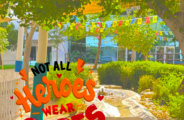




















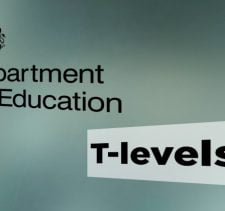






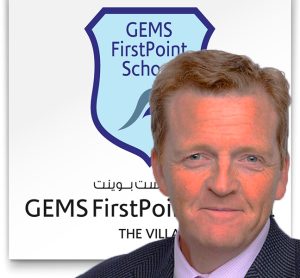











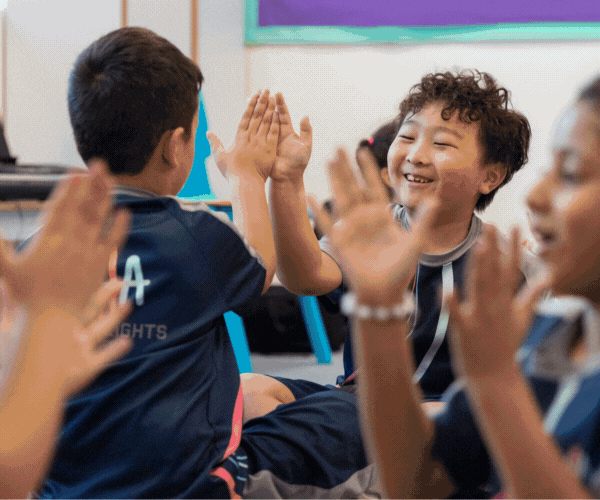











Leave a Response